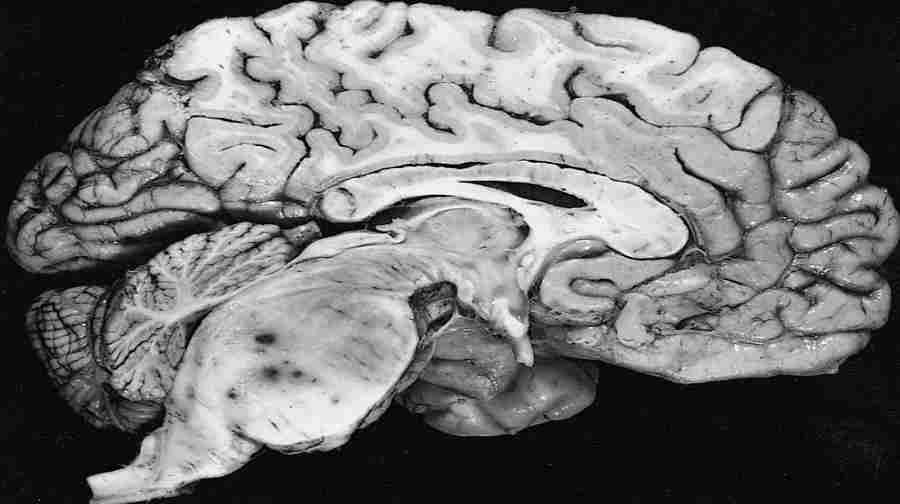
Previously unknown tubules between the skull and brain have been discovered
Scientists have discovered previously unknown small tunnels connecting the skull to the brain. It turns out that they act as a shortcut for immune cells, which thanks to them reach the site of injury faster.
Bone marrow – the spongy tissue inside most of our bones – produces red blood cells, as well as comoimmune rks, whichore help fight infections. According to a new study in mice and humans, small tunnels that run from the bone marrow of the skull bone to raceomozgu, may provide a direct pathway for comoimmune re responding to stroke injuries and other disorders mozgu.
The results of the study were published in „Nature Neuroscience”.
– We have always believed that the comorks of immunity from our hands and nog move with the blood to the damaged tissue mozg. Our findings suggest that the cellork immune cells may instead use skrohere to quickly reach the area ofoin inflammation,” said Dr. Francesca Bosetti, director of the National Institute of Neurological Disorders and Stroke, ktory is part of the National Institutes of Health and ktory provided funding for the study.
– Inflammation plays a key role in many m disordersozg and it is possible that the newly described channels could be important in many states. The discovery of these channelow opens up many new drog research – admitted Bosetti.
Using state-of-the-art tools and mouse-specific comorec dyeow, Professor Matthias Nahrendorf of Harvard Medical School and Massachusetts General Hospital in Boston managed to odrochew, or comoimmune cells moving into the tissue mozgowa damaged by stroke or meningitis mozg originate from bone marrow in the skull or tibia. In this study, the researchers focused on neutrophils, a particularolnym type of comoimmune reqs, whichore are among the first to appear at the site of trauma.
The results of the study conducted on mozgach mice showed that during stroke, the skull is more likely to supply neutrophils to damaged tissue than the tibia. In contrast, after myocardial infarction, the skull and tibia provided similar numbers of neutrophils to the heart, ktore is far from both of these areasow.
A group of scientistsoIn the Nahrendorf-led study, she observed rohe also found that six hours after the stroke, there were fewer neutrophils in the bone marrow of the skull bone than in that of the tibia, suggesting that the bone marrow released significantly more comorec to the site of the injury.
The findings suggest that bone marrow does not uniformly distribute comoimmune re. The damaged mozg and bone marrow can “communicate” in a certain wayob, resulting in a direct response from neighboring leukocytesow, ktore are roalso an element of the immune system.
The researchers found that the roThe variations in bone marrow activity during inflammation can be determined by stromal cell-derived factor-1 (SDF-1), a molecule thatora maintains the comoimmune cells in the bone marrow. When SDF-1 levels drop, neutrophils are released from the bone marrow. The researchers observed decreasing levels of SDF-1 six hours after the stroke, but only in the skull bone marrow, not in the tibia.
The results suggest that the decline in SDF-1 levels may be a response to local tissue damage. This, in turn, can alert and mobilize the bone marrow, whichory is closest to the site of inflammation.

Microscopic image of a mouse skull showing newly discovered vascular channels (arrows), whichore carry neutrophils and other cellsoimmune cells from the bone marrow to the outer membrane of the mozgu. Photo. Gregory Wojtkiewicz/Massachusetts General Hospital
– We began to examine the skull very carefully, looking at it from every angle, probing to determine howob Neutrophils reach the mozgu. Unexpectedly, we discovered small channels, ktore connected the bone marrow directly to the outer race of theoIozgu – admitted Nahrendorf.
Using advanced imaging techniques, the researchers observed the movement of neutrophils through channels. Blood normally flowed through them in the direction from the inside of the skull to the bone marrow, but after the stroke, neutrophils were noted moving in the opposite direction to reach the damaged tissue.
SyndromeoNahrendorf’s bench detected channels on the surface of the entire mouse skull, as roalso in the tibia, which led them to look for similar features in the human skull. Specificoł imaging probek of the human skull revealed the presence of similar canalsow. The canals in the human skull were five times larger in diameter than those in mice. Channels were found in the skulls of humans and mice zaroIn both the inner and outer layers of bone.
Future studies will aim to identify other types ofoin comorek, whichore travel through the newly discovered tunnels and the role these structures play in health and disease.


